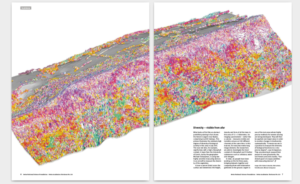A long time ago, I presented in a post a fun property of the family of curves given by the equations
where is the parameter: if we consider the number (say
) of solutions over a finite field with
elements, then we have
provided is not in the set
. This was a fact that Fouvry, Michel and myself found out when working on our paper on algebraic twists of modular forms.
At the time, I knew one proof, based on computations with Magma: the curves above “are” elliptic curves, and Magma found an isogeny between the curves with parameters and
, which implies that they have the same number of points by elementary properties of elliptic curves over finite fields.
By now, however, I am aware of three other proofs:
- The most elementary, which motivates this post, was just recently put on arXiv by T. Budzinski and G. Lucchini Arteche; it is based on the methods of Chevalley’s proof of Warning’s theorem: it computes
modulo
, proving the desired identity modulo
, and then concludes using upper bounds for the number of solutions, and for its parity, to show that this is sufficient to have the equality as integers. Interestingly, this proof was found with the help of high-school students participating in the Tournoi Français des Jeunes Mathématiciennes et Mathématiciens. This is a French mathematical contest for high-school students, created by D. Zmiaikou in 2009, which is devised to look much more like a “real” research experience than the Olympiads: groups of students work together with mentors on quite “open-ended” questions, where sometimes the answer is not clear (see for instance the 2016 problems here).
- A proof using modular functions was found by D. Zywina, who sent it to me shortly after the first post (I have to look for it in my archives…)
- Maybe the most elegant argument comes by applying a more general result of Deligne and Flicker on local systems of rank
on the projective line minus four points with unipotent tame ramification at the four missing points (the first cohomology of the curves provide such a local system, the missing points being
). Deligne and Flicker prove (Section 7 of their paper, esp. Prop. 7.6), using a very cute game with products of matrices and invariant theory, that if
is such a local system and
is any automorphism of the projective line that permutes the four points, then
is isomorphic to
.
Not too bad a track record for such a simple-looking question… Whether there is a bijective proof remains open, however!





